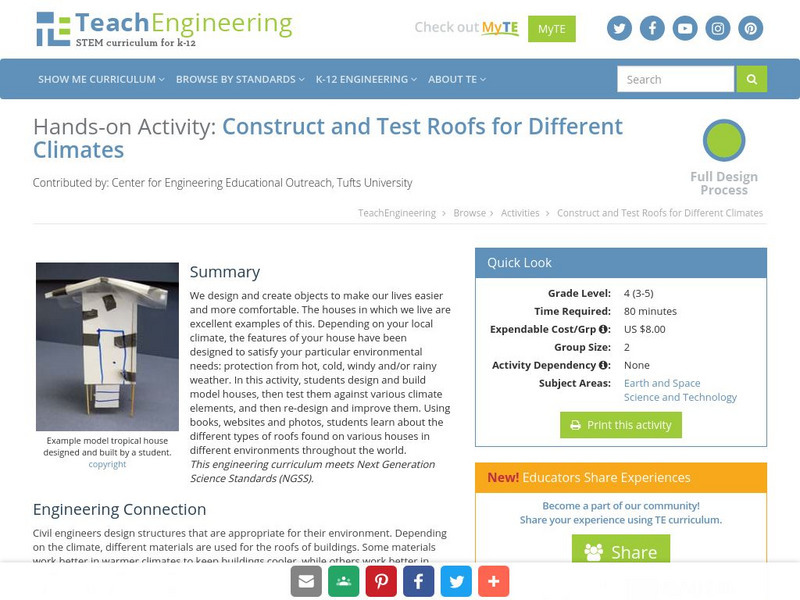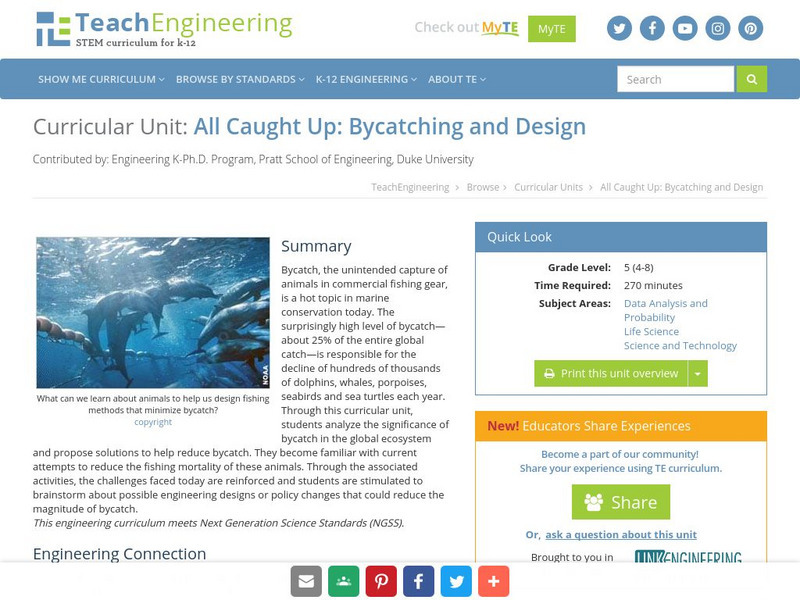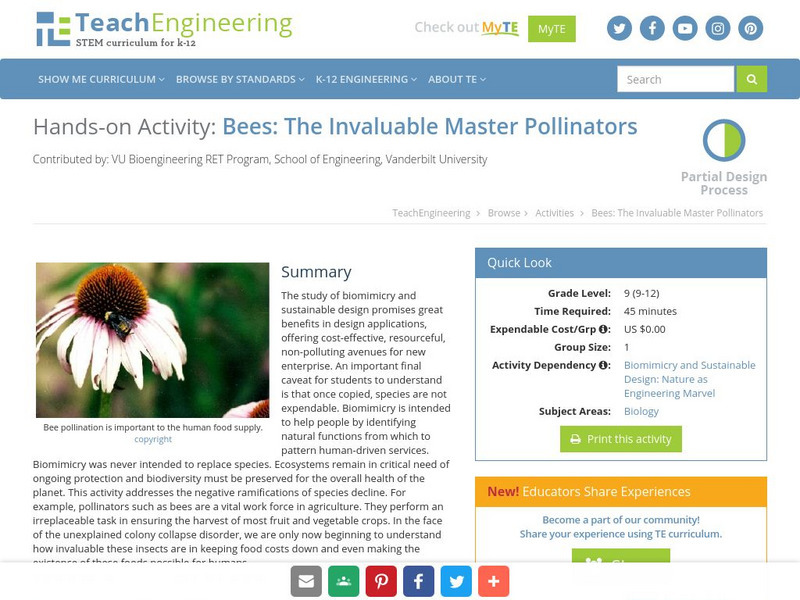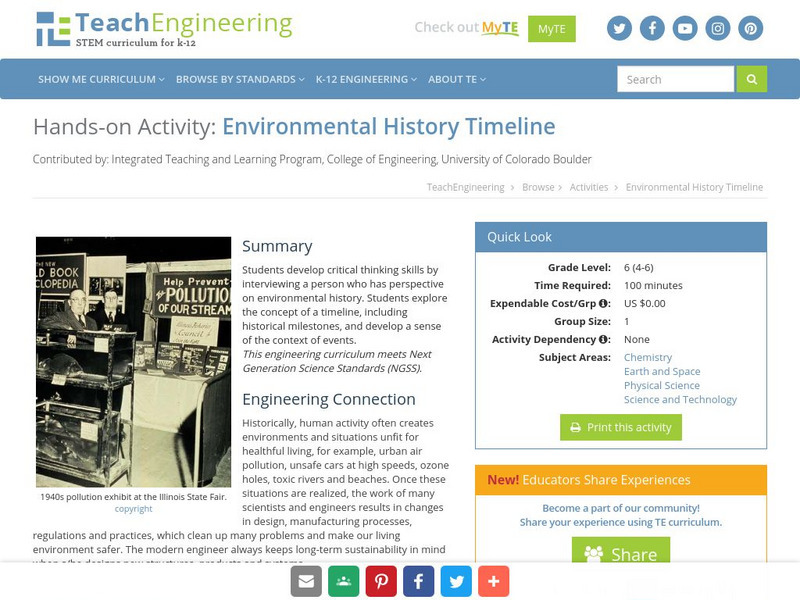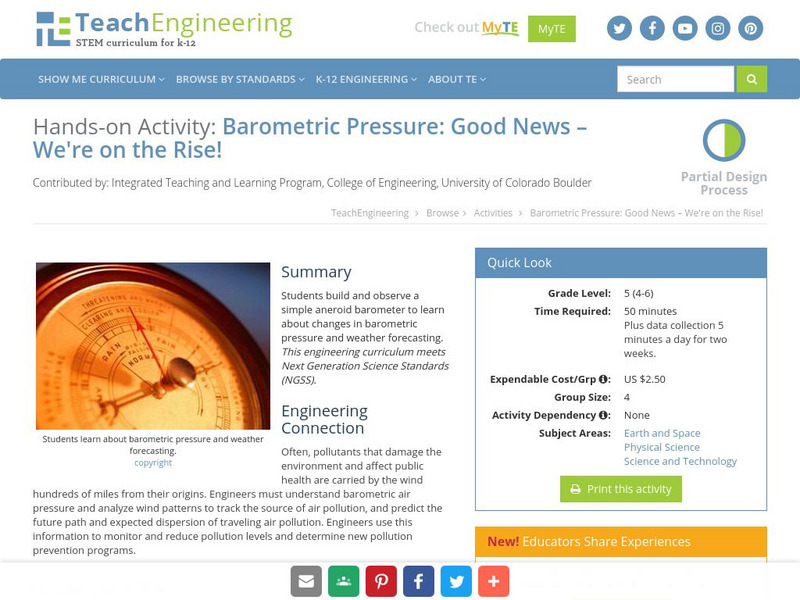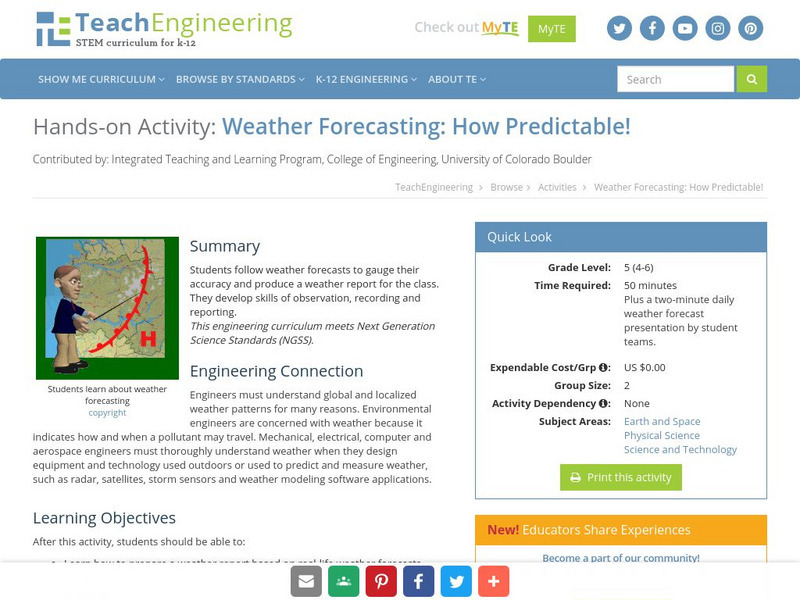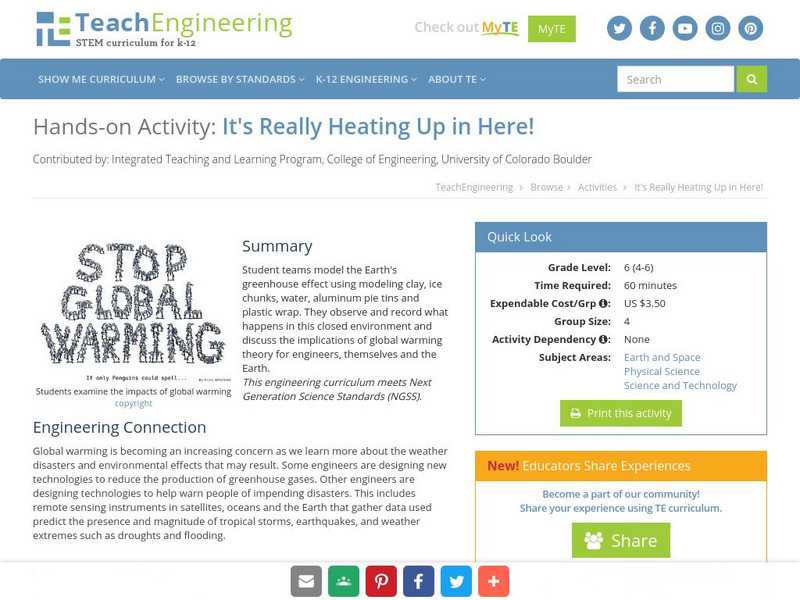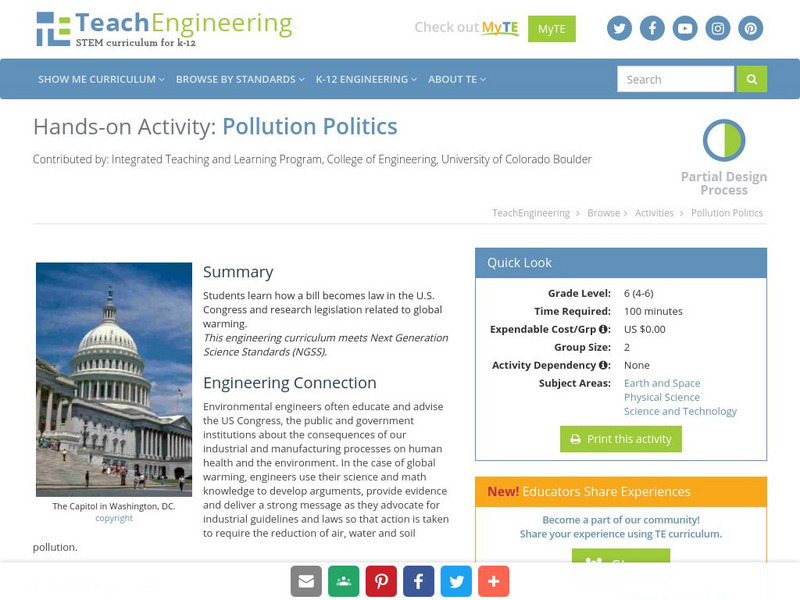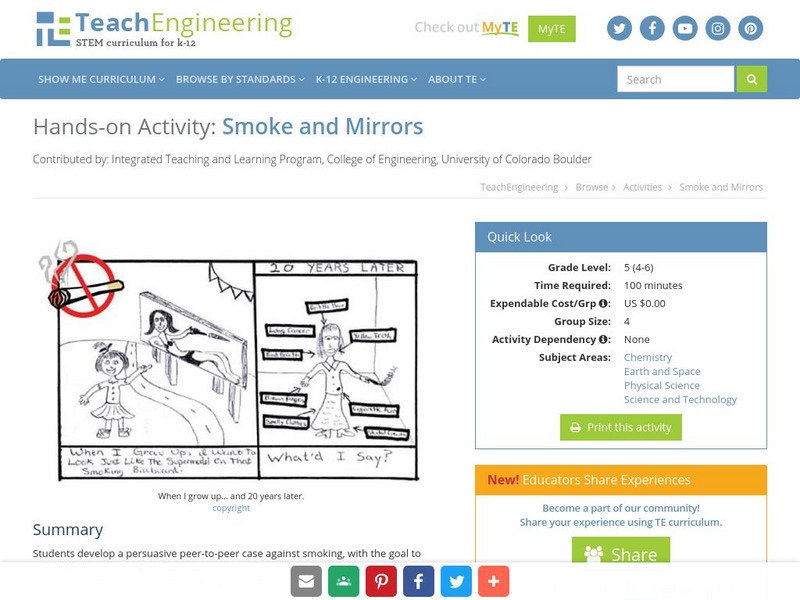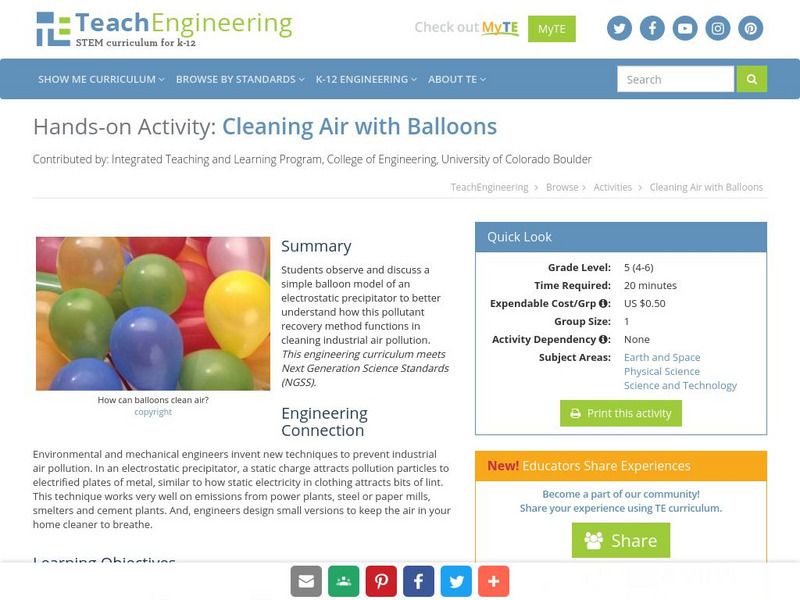TeachEngineering
Teach Engineering: Construct and Test Roofs for Different Climates
We design and create objects to make our lives easier and more comfortable. The houses in which we live are an excellent example of this. Depending on your local climate, the features of your house will be different to satisfy your...
TeachEngineering
Teach Engineering: All Caught Up: Bycatching and Design
Bycatch, the unintended capture of animals in commercial fishing gear, is one of the hottest topics in marine conservation today. About 25% of the entire global catch is bycatch. This surprisingly high level of bycatch is responsible for...
TeachEngineering
Teach Engineering: Be "Cool" With Popsicle Engineering
Beginning kindergarteners are introduced to science and engineering concepts through questions such as "What is a Scientist?" and "What is an Engineer?", and go on to compare and contrast the two. They are introduced to five steps of the...
TeachEngineering
Teach Engineering: Naturally Organized
Students work in teams to design a tabletop supply organizer inspired by the natural home of an insect species. Their prototype stores the group's classroom supplies (scissors, crayon boxes, pencils, and glue sticks). In addition to...
TeachEngineering
Teach Engineering: Solving Everyday Problems Using the Engineering Design Cycle
Students are introduced to two real-life problems that can be solved by using the engineering design process. For the first one, they watch a slide presentation that shows how students use the engineering design process to build an...
TeachEngineering
Teach Engineering: Trade Offs and Maximizing Efficiency in a Fast Food Restaurant
Students learn about how to improve efficiency by examining fast food restaurants. More specifically, they learn about the concepts of trade-offs, constraints, increasing efficiency and systems thinking. They consider how to improve the...
TeachEngineering
Teach Engineering: Gears: Lift It Up!
In this activity, students learn about the trade-off between speed and torque when designing gear ratios. The activity setup includes a LEGO pulley system with two independent gear sets and motors that spin two pulleys. Each pulley has...
TeachEngineering
Teach Engineering: Bees Are Master Pollinators
The study of biomimicry and sustainable design promises great benefits in design application. It affords means by which to promote cost-effective, resourceful, non-polluting avenues for new enterprise. These "blueprints" have existed...
TeachEngineering
Teach Engineering: What Color Is Your Air Today?
Students develop awareness and understanding of the daily air quality using the Air Quality Index (AQI) listed in the newspaper. They explore what engineers can do to help reduce poor air quality.
TeachEngineering
Teach Engineering: Environmental History Timeline
Students develop critical thinking skills by interviewing a person who has perspective on environmental history. Students explore the concept of a timeline, including historical milestones, and develop a sense of the context of events.
TeachEngineering
Teach Engineering: Good News We're on the Rise!
Students build and observe a simple aneroid barometer to learn about changes in barometric pressure and weather forecasting.
TeachEngineering
Teach Engineering: Dangerous Air
By tracing the movement of radiation released during an accident at the Chernobyl nuclear power plant, students see how air pollution, like particulate matter, can become a global issue.
TeachEngineering
Teach Engineering: How Predictable!
Students follow weather forecasts to gauge their accuracy and produce a weather report for the class. They develop skills of observation, recording and reporting.
TeachEngineering
Teach Engineering: Acid Rain Effects
Students conduct a simple experiment to model and explore the harmful effects of acid rain (vinegar) on living (green leaf and eggshell) and non-living (paper clip) objects.
TeachEngineering
Teach Engineering: It's Really Heating Up in Here!
Students create and observe a greenhouse effect model and discuss the implications of global warming theory for engineers, themselves and the Earth.
TeachEngineering
Teach Engineering: Pollution Politics
Students learn how a bill becomes law in the U.S. Congress and research legislation related to global warming.
TeachEngineering
Teach Engineering: Smoke and Mirrors
Students develop a persuasive peer-to-peer case against smoking, with the goal to understand how language usage can influence perception, attitudes and behavior.
TeachEngineering
Teach Engineering: Cleaning Air With Balloons
Students observe and discuss a simple balloon model of an electrostatic precipitator to better understand how this pollutant recovery method functions in cleaning industrial air pollution.
TeachEngineering
Teach Engineering: A Merry Go Round for Dirty Air
Students observe and discuss a cup and pencil model of a cyclone to better understand how this pollutant recovery method functions in cleaning industrial air pollution.
TeachEngineering
Teach Engineering: Let's Bag It
Students observe and discuss a vacuum cleaner model of a baghouse to better understand how this pollutant recovery method functions in cleaning industrial air pollution.
TeachEngineering
Teach Engineering: What's a Kid to Do?
Students write letters as part of an environmental action campaign. They become more aware of global environmental problems and play a part in their solution.
TeachEngineering
Teach Engineering: Fun With Bernoulli
While we know there is air around us all the time, we normally do not notice the air pressure. The purpose of this is activity is to use Bernoulli's Principle to manipulate air pressure so we can see its influence on the objects around us.
TeachEngineering
Teach Engineering: Air Pressure
Air pressure is pushing on us all the time although we do not usually notice it. This activity will discuss the units of pressure and give the students a sense of just how much air pressure is pushing on them.
TeachEngineering
Teach Engineering: Windy Tunnel
The purpose of this activity is to demonstrate Bernoulli's Principle as it relates to winged flight. The students will use computers to see the influence of camber and airfoil angle of attack on the lift.
